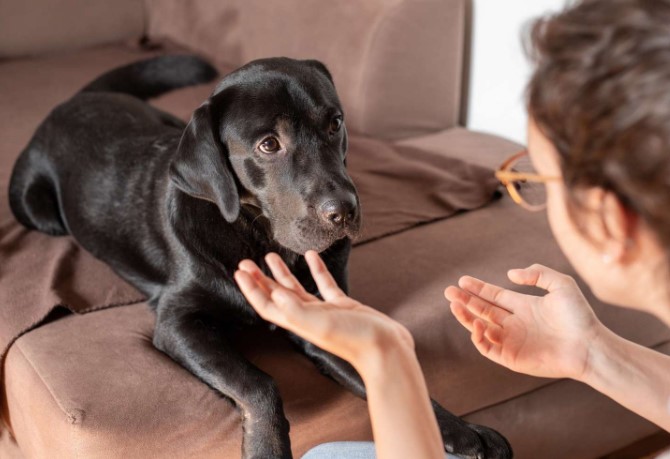Five Clever Ways to Help your Elderly Dog Walk Easier

By Dr. Bethany Hsia, Co-founder of CodaPet,
which recently launched in Boca Raton, FL
As dogs age, they may experience difficulty walking due to joint pain, arthritis, or other health issues. As a pet owner, it can be heartbreaking to see your canine companion struggle to get around. Fortunately, there are several ways you can help your elderly dog walk easier and improve their quality of life. In this blog post, we will discuss five clever ways to help your elderly dog walk easier.
1. Provide a Comfortable Bed
One of the simplest things you can do for your elderly dog is to provide them with a proper bed. A comfortable and supportive bed can help relieve pressure on their joints and reduce pain. Look for a bed that is made from memory foam or orthopedic materials, as these will provide the most support. Consider the design of the bed to avoid any need for climbing up to get into it, especially for smaller dogs.
2. Use Ramps or Steps
If your dog has trouble climbing stairs or getting up onto furniture (where they are allowed), ramps and steps can be a great solution. Small moveable ramps or steps make it easier for your dog to navigate their environment without putting unnecessary strain on their joints. You can purchase these items online or at your local pet store, or you can even make them yourself using common hardware store materials such as plywood and PVC pipe. They are also useful when helping your pet get into or out of a vehicle.
3. Try Joint Supplements
Joint supplements can be an effective way to reduce inflammation and improve mobility in elderly dogs. Glucosamine and chondroitin are two popular supplements that are often combined to promote joint health in dogs. These supplements work by providing the building blocks for cartilage repair and reducing inflammation in the joints. With several formulations available, it is important to talk to your veterinarian about which joint supplements may be right for your dog.
4. Consider Alternative Therapies

Physical therapy, acupuncture, laser treatments, and more, can be great adjunct treatments to improve mobility in elderly dogs. A veterinarian who specializes in alternative therapies can work with your dog to develop a customized plan that targets their specific needs. A physical therapist may prescribe exercises such as swimming or walking on an underwater treadmill to build strength, flexibility and range of motion. Meanwhile an acupuncturist can target areas of tension and inflammation. Using a multi-modal approach is a fantastic way to address the problem from several angles.
5. Stop the Slip
Slippery floors can keep dogs with arthritis or weakness on the ground, unable to rise. Covering slippery surfaces with rubbery mats, such as yoga mats, can help elderly dogs gain enough purchase to rise and navigate more easily. Alternatively, you can put anti-slip booties or toe grippers on your dog to provide stability without covering your floors.
For dogs with more serious weakness, a supportive harness can be a great tool for helping them get around. A special harness or sling can provide extra stability; allowing them to rise and walk about as you gently support most of their weight. This can be especially useful in helping frail dogs navigate to the appropriate location to relieve themselves.
For elderly dogs that are unable to walk, there are additional options available. Doggie wheelchairs or carts can provide mobility for dogs with hind leg weakness or paralysis. Another possible option is a pet stroller; wheelchairs, carts, and strollers come in many different sizes and styles so you can select the one that works best for your dog. Depending on the size of your pet, you may also be able to wear them in a supportive sling.
Over time, if you find that your dog’s mobility is continuing to decline and their quality of life is waning; it may be time to consider the kindness of saying goodbye. Speak with your veterinarian to determine if your dog is suffering. If the answer is “yes” and there are no longer viable options for alleviating their suffering you can find a veterinarian to perform dog euthanasia, in a clinic or at home. The term euthanasia means “good death”; it is the ending of the pet’s suffering and of the condition or disease causing their suffering. When appropriate, it is a good final gift for our beloved pets. But hopefully that particular gift is not needed for a long time.
You can extend the pep in your dog’s step by supporting them physically in the five ways mentioned above. And don’t forget to support them with lots of extra love and affection. By taking these steps, you can help ensure that your elderly dog stays happy, healthy, and mobile in their golden years.